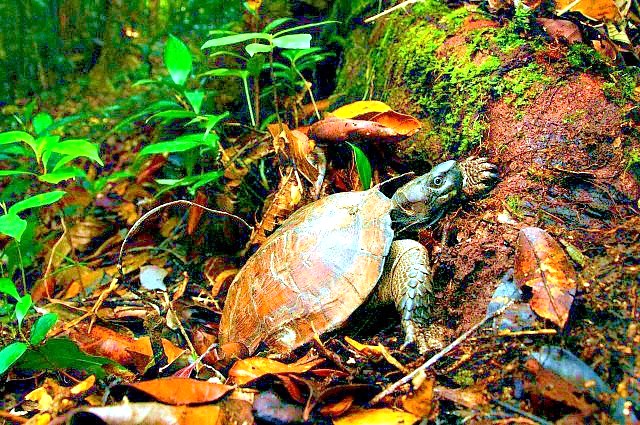Spiny turtle (Heosemys spinosa) The origin of its common and specific name is immediately apparent from the sharp, pointed, spiky-edged carapace, and spiny keel, of this unique turtle, also known as the 'cog-wheel turtle'. There are also smaller spines on the pleural scutes, creating the effect of a walking pincushion. It is thought that this spiny ‘armour’ acts as a deterrent to predators, such as snakes. However, this unmistakable, strongly-serrated carapace edge and spiny keel become worn down and are lost with age, so that larger individuals are much smoother than juveniles. The carapace is brown with a pale streak down the central keel, and the head and limbs are greyish-brown, usually with a yellow to red spot behind the eye and similar-coloured speckling on the legs. This cryptic colouration helps camouflage the turtle amongst the leaf litter of its forest floor habitat. The plastron is buff-coloured with an intricate pattern of dark radiating lines on each scute.
